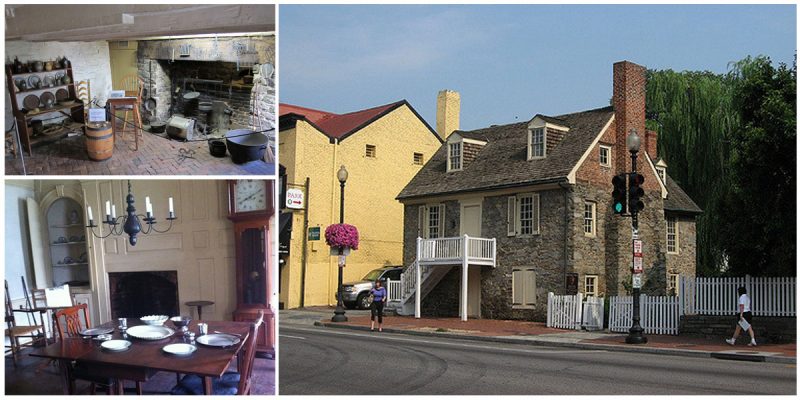The Old Stone House in Georgetown is the oldest structure that has remained unchanged and on its original site in Washington, D.C. No famous people lived there, and no major events took place in it. But how people lived in the American colonies and early decades of the United States can be gleaned from a visit to this beautiful historic building.
The Stone House was built on Bridge Street, at the time a main thoroughfare, in 1765 in the British colony of Maryland. The current address is 3051 M Street, NW.
The Layman family in 1764 bought a piece of land; they raised a one-room dwelling. When Christopher Layman, a cabinetmaker, died in 1765, his wife sold it to Cassandra Chew, who was fairly prosperous. Chew owned several estates in the town. In the years of owning the Bridge Street house, she added a second and a third floor and a kitchen. Many elements of the original kitchen are on display today, with chairs and a table close to the wood-fired oven. The kitchen also has a cupboard showing bottles and plates.
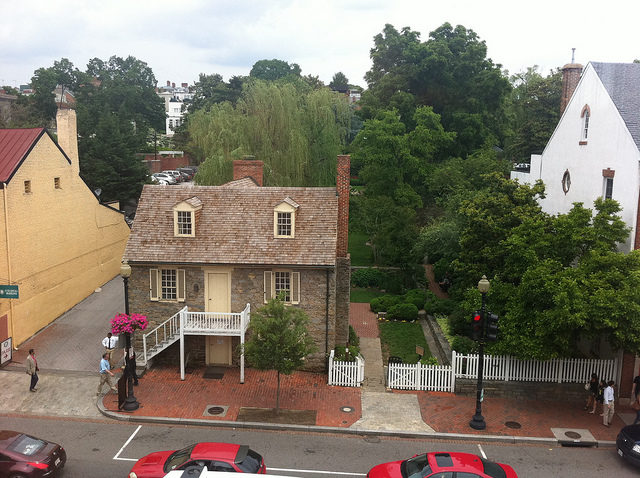
The original west wall had to be dismantled because it turned out to have constructed six feet beyond the property line. After the job was finished, Chew added the upper floor, which was finished by 1790.When President George Washington decided that this area was going to be the new nation’s capital, the government officials carved out land from Maryland and Virginia for expansion. For the design of the town layout, Pierre L’Enfant was appointed by Washington, and he began his work in 1791.
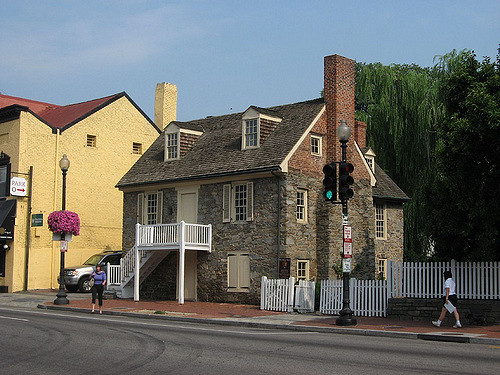
The nearby Suter’s Tavern, also known as Georgetown’s Fountain Inn, was a popular gathering place. While L’Enfant worked, he rented a room in the Old Stone House, and it was believed that he met with President Washington to discuss the planning of Washington, D.C., either at Suter’s or at the Old Stone House, although there is no documentation proving it.
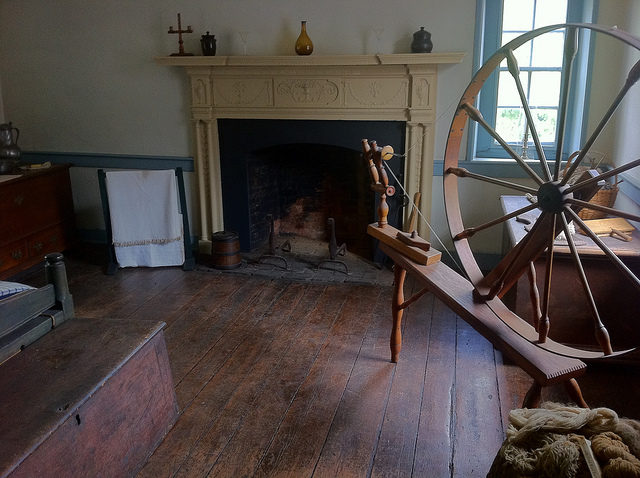
But because of this belief, the house was never demolished, unlike most of the surrounding buildings. A sign hung on the front door saying, “George Washington’s Headquarters.” After many years, it turned out that this story was stretching the truth too far and it was removed.
According to the National Park Service, the house is the best-surviving example of architecture of this period. The façade was built with blue granite and stones from the surrounding fields. Many elements were made from oak, including the roof and the front door. One of the best-known pieces, dating to the 19th century, is the clock in the dining room, which was made by John Suter, Jr.
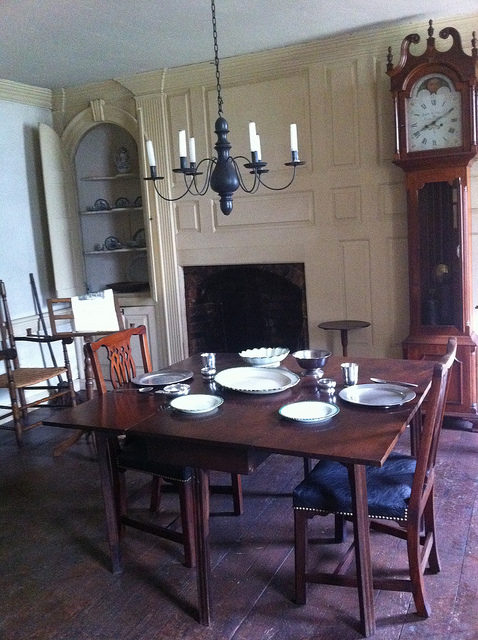
The second floor is different from the first floor because of the quality of the building materials bought by Chew. On the plastered second floor are found the dining room, the parlor, and the bedroom. The third floor was a private place, and some parts of it are unfinished. It is believed that this floor was for children’s bedrooms and a storage area.
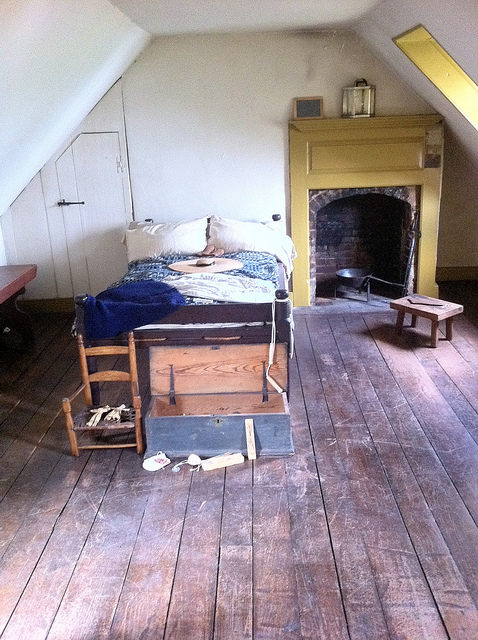
The National Park Service renovated the house in the 1950s, and it became a museum. Around the house, there are many restaurants and shops because it is right in the middle of Georgetown.
Read another story from us: The Hanging Houses of Cuenca, a harmony between nature and architecture
The property is part of the Rock Creek Parkway, and it has fantastic gardens which are also open to the public. In 1973, the house was listed on the National Register of Historic Places, and it became a National Historic Landmark.
